Planting iceberg lettuce seedlings, stem broccoli, cabbage (Grow lettuce, stem broccoli, cabbage)
Growing iceberg lettuce, stem broccoli, and cabbage in mulching cultivation. Last time, I added fertilizer to the plot, tilled the soil, and made planting bed. This time, I will plant iceberg lettuce, stem broccoli, and cabbage seedlings.
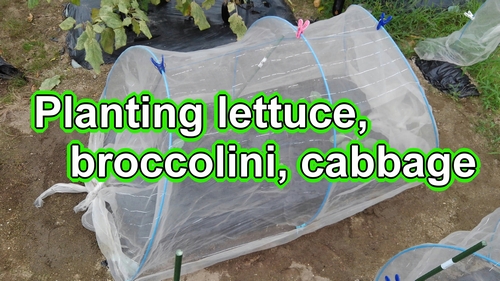

Early September is the best time to plant iceberg lettuce, stem broccoli, and cabbage. For vegetables that form heads like iceberg lettuce and cabbage, be careful not to plant them late, because they might not form heads if planted too late.

The deadline for planting seedlings is around mid-September. If you plant after this, the outer leaves needed for forming heads may not grow enough, and the cabbage might not become round.
This time, I have 2 iceberg lettuce seedlings, 1 stem broccoli seedling, and 2 cabbage seedlings. I will plant a total of 5 seedlings, so let’s check the planting spots beforehand. The space between each seedling should be about 40cm (15.7 inches).
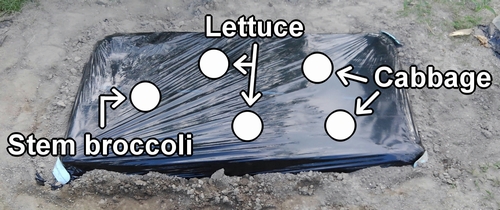
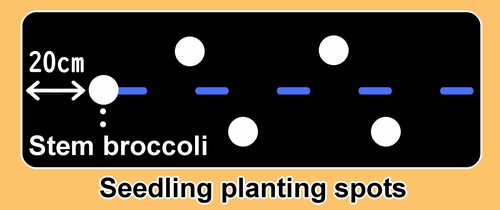

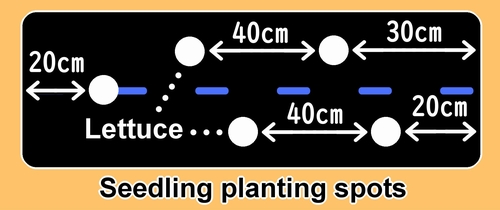
How to plant iceberg lettuce, stem broccoli, and cabbage seedlings
To plant the iceberg lettuce, stem broccoli, and cabbage seedlings, first, make hole in the planting plot. (I use a mulch cutter to make the hole.)

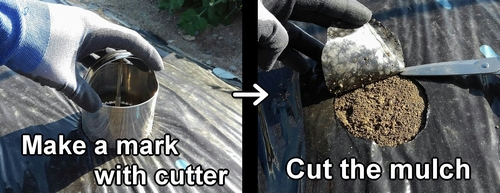

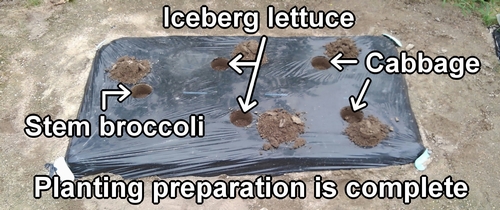
Check the depth and size of the planting holes. Let’s put the iceberg lettuce, stem broccoli, and cabbage seedlings in their pots into the holes. This will help you see how deep and wide the holes need to be.

Make sure the depth of the hole matches the height of the soil in the pot. A hole that is too deep is not good. Depending on the soil’s drainage, moisture, and air flow, planting the seedling too deep can increase the risk of root rot and poor growth. If the hole size is not right, use a trowel to adjust it.
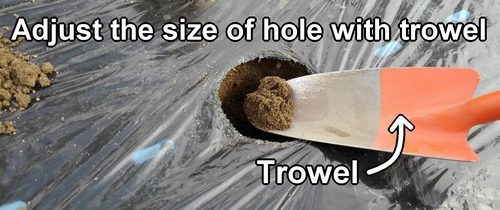
Fill the hole with water up to 80%. Iceberg lettuce, stem broccoli, and cabbage seedlings should be planted after the water has drained away.
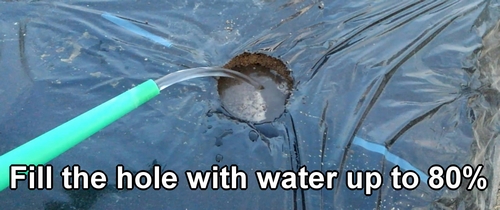
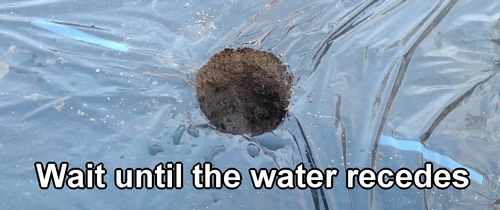
Filling the planting hole with water is an important step in planting. Vegetables grown from seedlings, like iceberg lettuce, stem broccoli, and cabbage, often have very little soil in their pots and the soil is usually dry.
It’s like the seedlings are “thirsty”. If you fill the planting hole with water before putting the seedling in, it helps the plant grow better. When the seedling’s roots take well to the soil, we say it has “taken root" or has a “good survival rate".
Iceberg lettuce, stem broccoli, and cabbage seedlings are delicate. Handle seedlings gently during planting to prevent them from breaking or getting damaged. The way to plant seedlings is to first pinch the stem of the seedlings between your fingers, and turn over the pot.
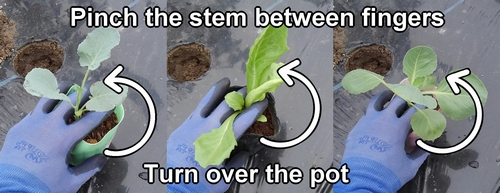
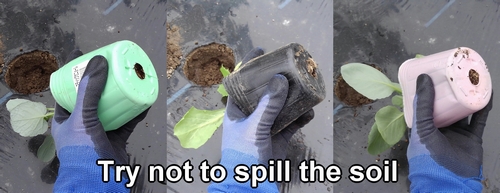
Gently remove the iceberg lettuce, stem broccoli, and cabbage seedlings from the pot and plant in the hole. Try to avoid breaking the soil around the seedlings as much as possible.
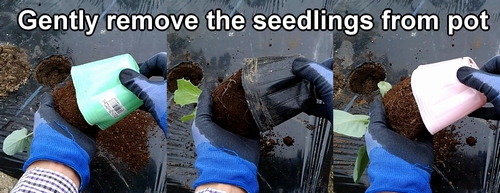
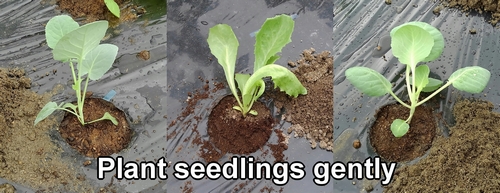
After planting the iceberg lettuce, stem broccoli, and cabbage seedlings, return the previously set aside soil and fill the gaps around the hole. Once the gaps are filled, gently press down the soil around the base of the seedlings, being careful not to damage them.
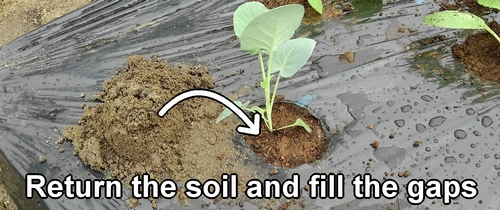
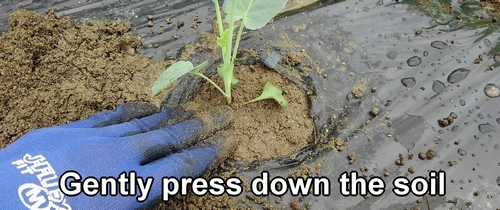
If there is a gap between the soil in the pot and the soil in the ground, the roots won’t grow well into the ground (roots don’t grow into empty space). This makes it harder for the seedling to take root. If it doesn’t take root well, the plant might not grow properly. So, make sure the soil is packed tightly around the roots.
Any excess soil from planting iceberg lettuce, stem broccoli, and cabbage should be dropped beneath the bed. If the leftover soil comes into contact with the leaves, it can potentially lead to diseases. Let’s keep the surface of the mulching film clean.
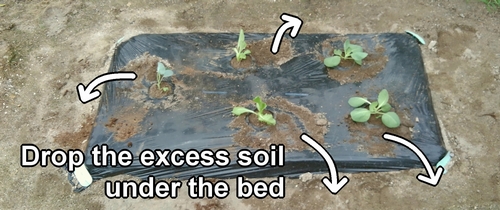
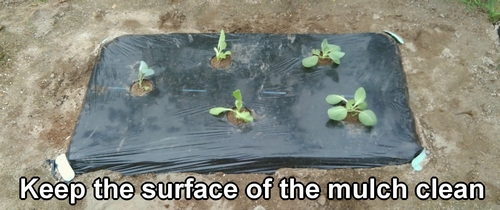
To prevent the stem of stem broccoli from breaking, set up 90cm (3 feet) stake alongside them for support. Insert the stakes at an angle, avoid damaging the roots. (Remove the stakes once the plants are established, and the stems are sturdy.)
Iceberg lettuce and cabbage plants do not need support with stakes.
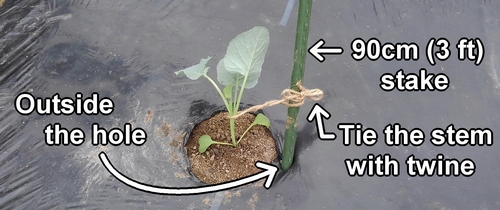

Water in newly planted iceberg lettuce, stem broccoli, and cabbage very thoroughly. (To establish the plants in the bed.)
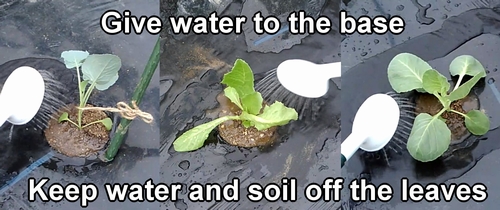
Water the base of the plant, not the leaves. If you pour water from above, soil can splash onto the leaves, which can cause disease. Water directly on the leaves can also damage them. So, always water at the base of the plant.
Pest control for iceberg lettuce, stem broccoli, and cabbage (Use a grow tunnel and insect netting to keep bugs away)
The last step is pest prevention for iceberg lettuce, stem broccoli, and cabbage. These brassica vegetables attract bugs easily, so we cover the bed with an insect netting. (Use poles to make a grow tunnel and put the net over it.)
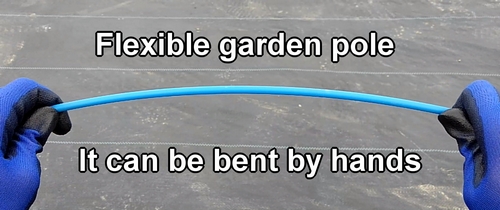

Insert the flexible poles diagonally toward the inside of the bed and set up 3 of them at equal intervals.

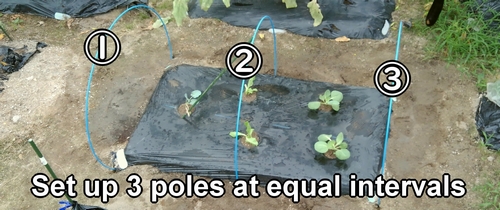
Cover the net over the poles. The edge of the insect netting is tied with knot, and U-shaped garden pin is hooked onto this knot. The garden pin is then inserted into the ground to secure it. Please be careful not to insert the pin directly into the insect netting as it may cause holes.
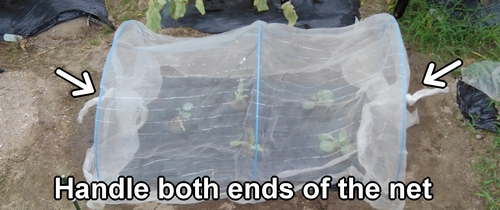
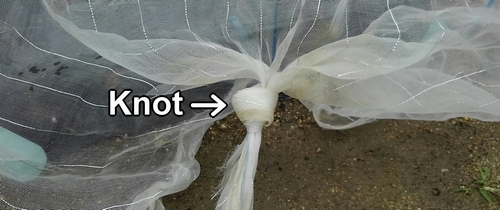
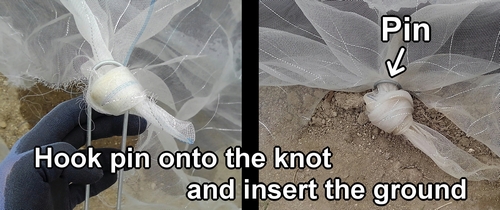
The insect netting on the side of the flexible poles is secured with a tunnel clips. The tunnel clips are fitted onto the flexible poles, sandwiching the insect netting in between. The tunnel clip is used with the projection part facing downwards. (Embed the projection part slightly into the ground.)
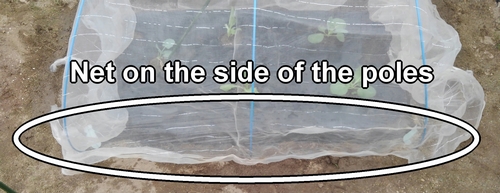
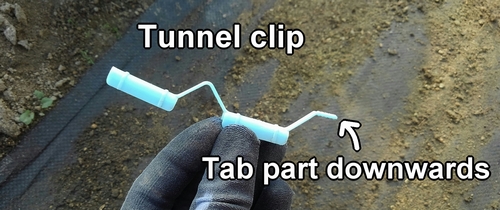
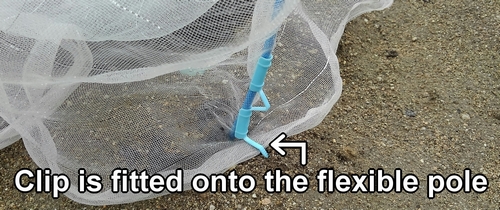
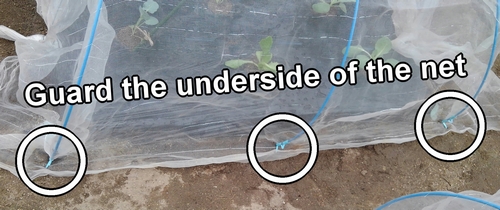
Tie and gather any excess of the insect netting.
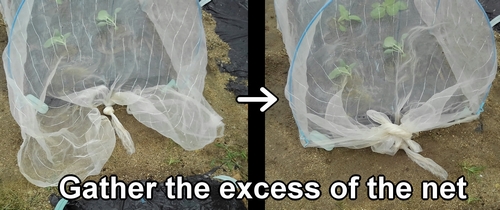
Secure the insect netting with clothespins. With this, the planting of iceberg lettuce, stem broccoli, and cabbage seedlings is complete.

Grow tunnel (garden grow tunnel) is often used for growing autumn and winter vegetables. It’s useful for pest and cold protection, so it’s good to remember. The way to make a cultivation tunnel is also introduced in this article.
Following is the video for how-to. English subtitles are available.


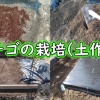



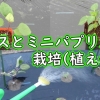
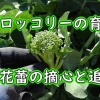

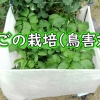
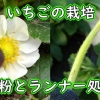
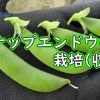
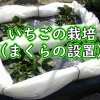
ディスカッション
コメント一覧
まだ、コメントがありません